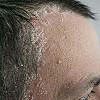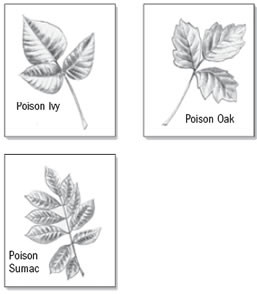Dodging skin irritations from problem plants
|
Photo: Thinkstock |
These simple steps can save you from itchy, oozing rashes.
You probably learned about the risks of poison ivy a long time ago, but as you spend more time in the garden this spring, you should know that many plants can cause rash. So it's important to learn which are the common offenders and how to take precautions against them. "For some people, one exposure to a plant is all it takes to become allergic to it," says dermatologist Dr. Kenneth Arndt, a Harvard Medical School professor.
The offenders
Just like animals, many plants have defenses to protect themselves. Some secrete an allergenic oil or sap. If you touch it or brush against it, the contact triggers an allergic reaction that shows up in two to 10 days as a red, swollen, itchy, blistering rash known as allergic contact dermatitis. Poison ivy, poison oak, and poison sumac are best known for causing the problem, but there's a long list of other offenders, such as tomato plant leaves and many flowers, including marigolds, chrysanthemums, poinsettias, and philodendrons.
Other plants protect themselves with spines and thorns. Roses and cacti are famous for these, but the tiny spikes are on many common plants, such as some mosses, palms, and blackberry and raspberry bushes. The rash that results from contacting these spikes is similar to contact dermatitis, but includes tiny puncture wounds and is called mechanical irritant dermatitis.
Know your poisons
Poison Ivy and Poison Oak (above) are either |
Treatment
Dr. Arndt says the allergic reaction will go away on its own in about 10 days, but you'll likely want relief from the burning, itching sensation. To relieve symptoms, he recommends applying cool compresses and then patting your skin dry. He also prescribes topical steroids. "Hydrocortisone is available over the counter, but it's low potency," says Dr. Arndt. He says the most potent creams are prescription-only—clobetasol (Cormax, Temovate) and fluocinonide (Lidex).
You'll have to apply the creams a few times a day until the rash clears up. The best way to apply the creams, says Dr. Arndt, is to wash the affected skin, pat it dry, and then apply the cream while the skin is still moist. It will be better absorbed that way.
Busting poison ivy myths:1 Myth: The rash is contagious.Not true. It looks unpleasant, but it won't spread on yourself or to another person, even when you see oozing blisters. 2 Myth: If you have it one time, you're immune to it.Not true. Once you get it, you will surely get it again because you'll be allergic to it. 3 Myth: You can get it by breathing it in.Sometimes true. While you won't inhale the toxin if you walk by it, you may experience an allergic reaction if the plant is being burned nearby and you breathe in the smoke. |
Prevention
The easiest way to avoid one of these rashes is to protect yourself when you're outside. That means wearing protective clothing—long sleeves and pants when gardening or spending time near potentially poisonous plants. Dr. Arndt also suggests using a thick pair of work gloves. "The best gloves are heavy enough that they aren't easily penetrated, but flexible enough that you can work with them," he says.
You can also be proactive once you're back inside. Use soap and water to wash your hands or any part of your body that may have come in contact with poisonous plants. "If you wash immediately, most of the plant oil will diminish or come off," says Dr. Arndt. "If you wait 10 to 15 minutes, half of the oil will come off. If you wait an hour, none will come off."
Disclaimer:
As a service to our readers, Harvard Health Publishing provides access to our library of archived content. Please note the date of last review or update on all articles.
No content on this site, regardless of date, should ever be used as a substitute for direct medical advice from your doctor or other qualified clinician.

















